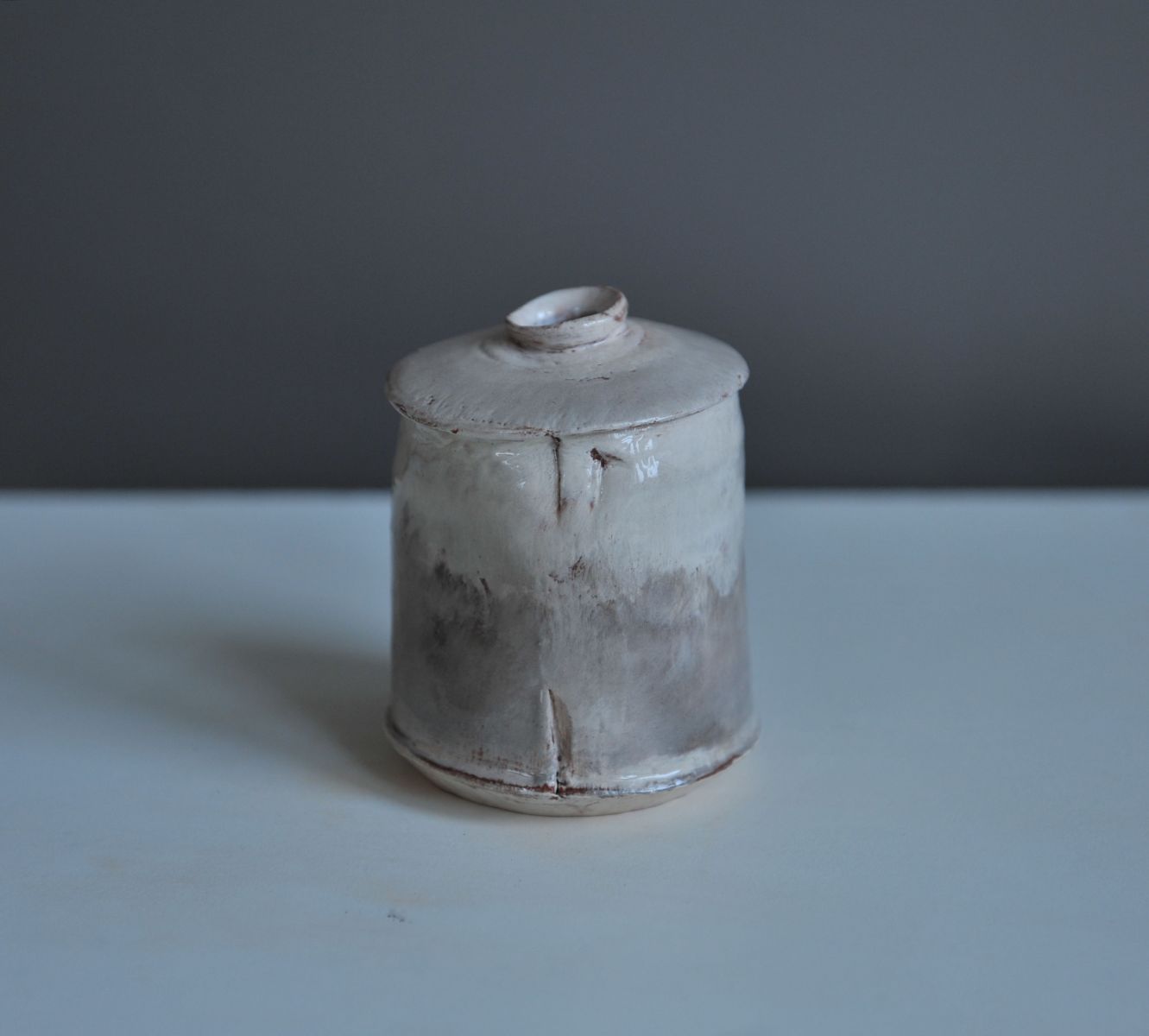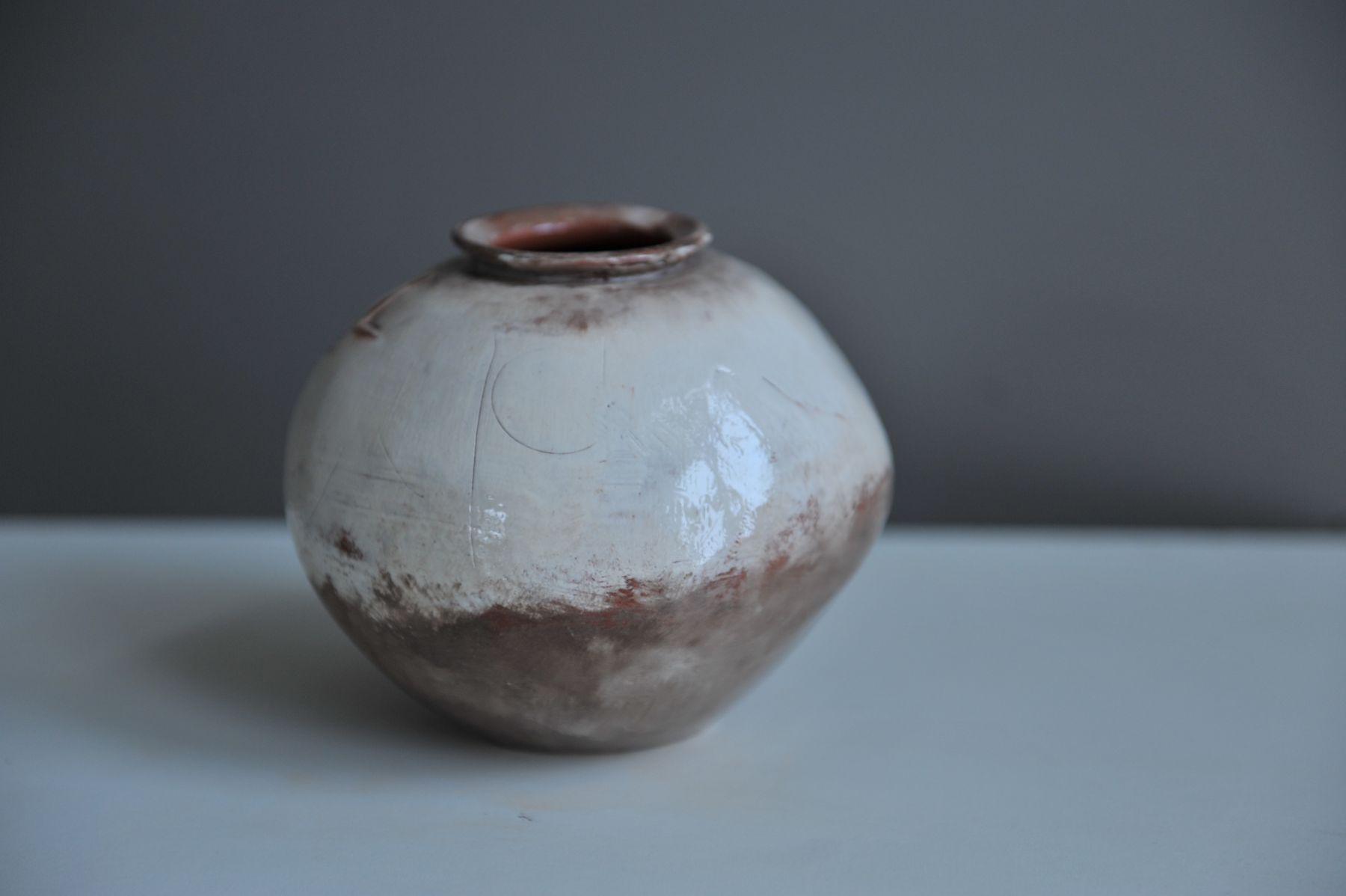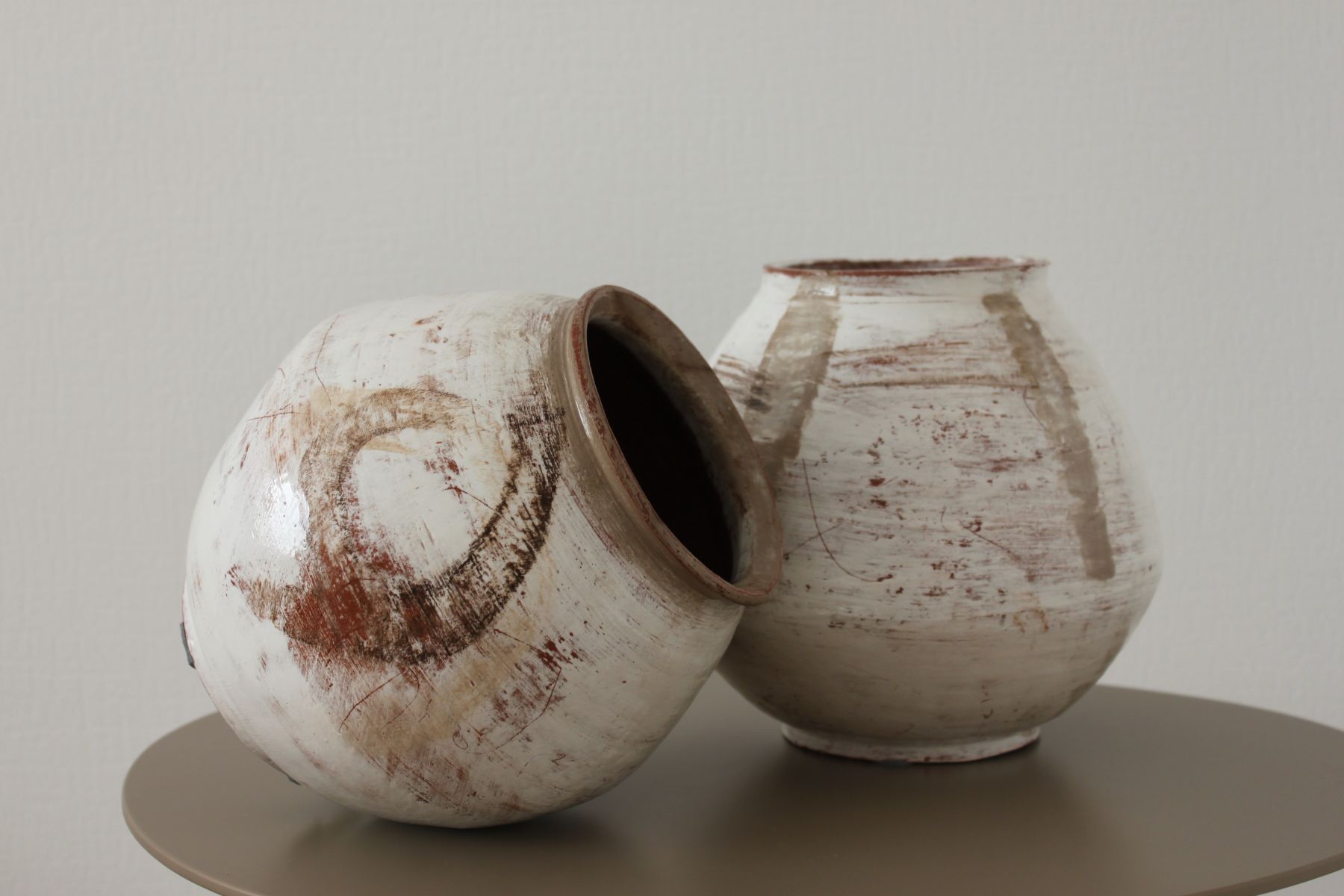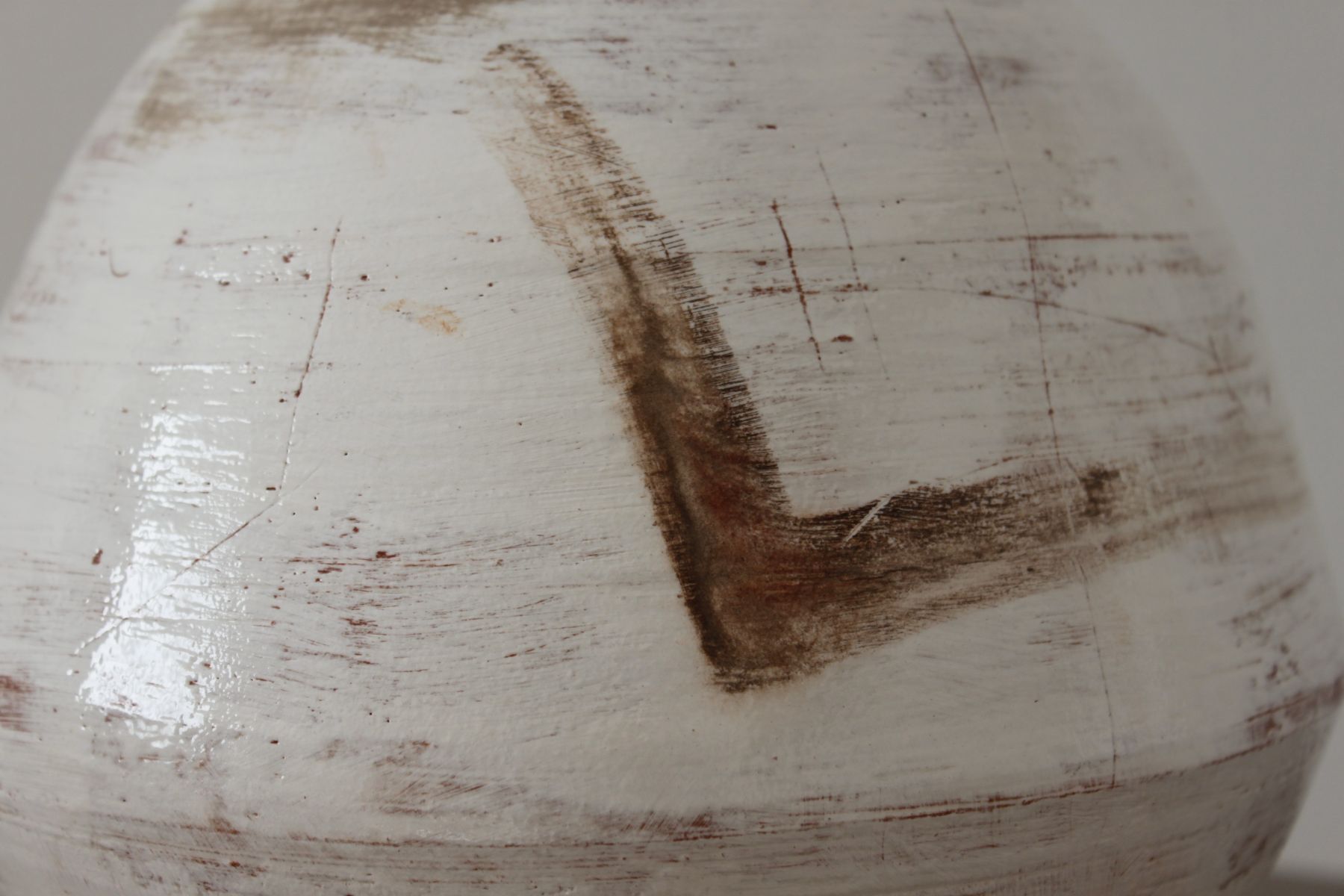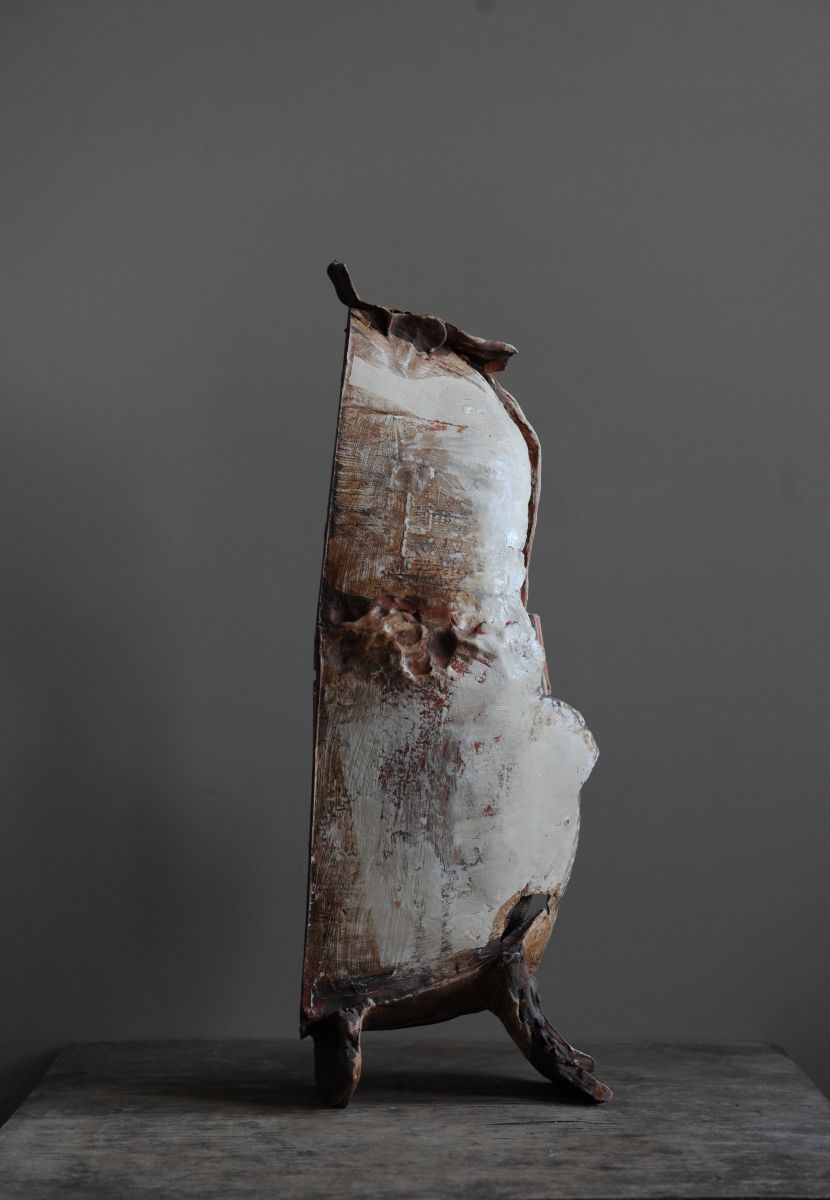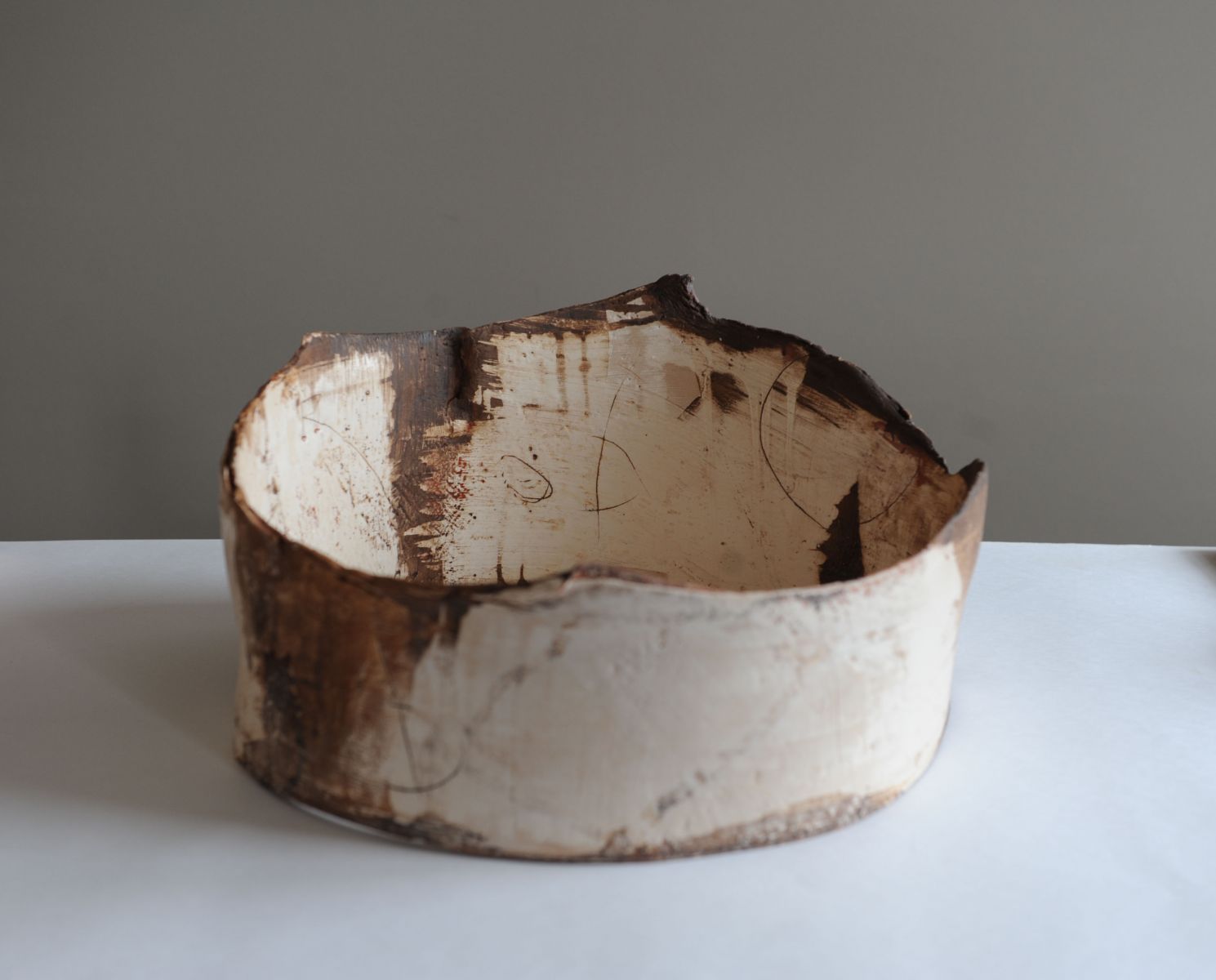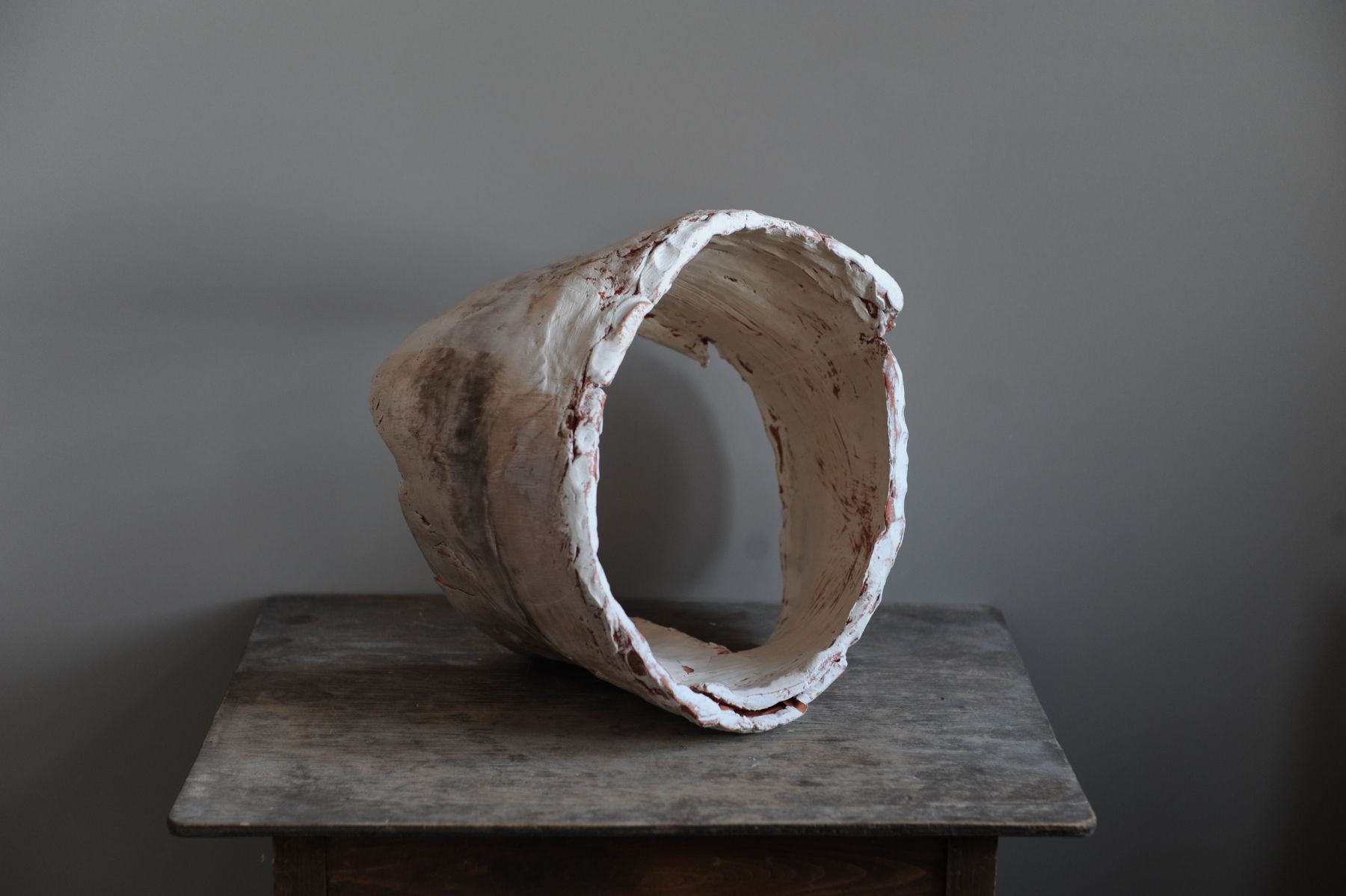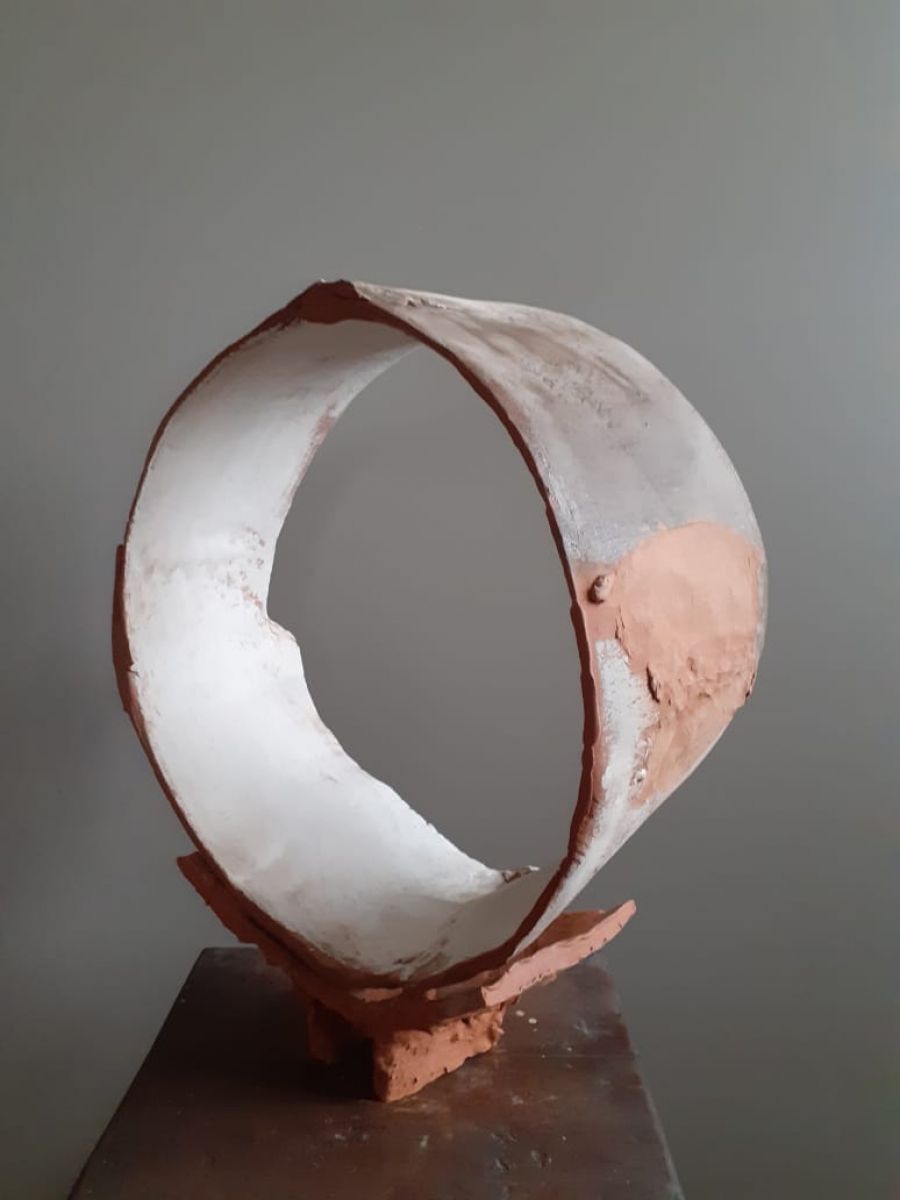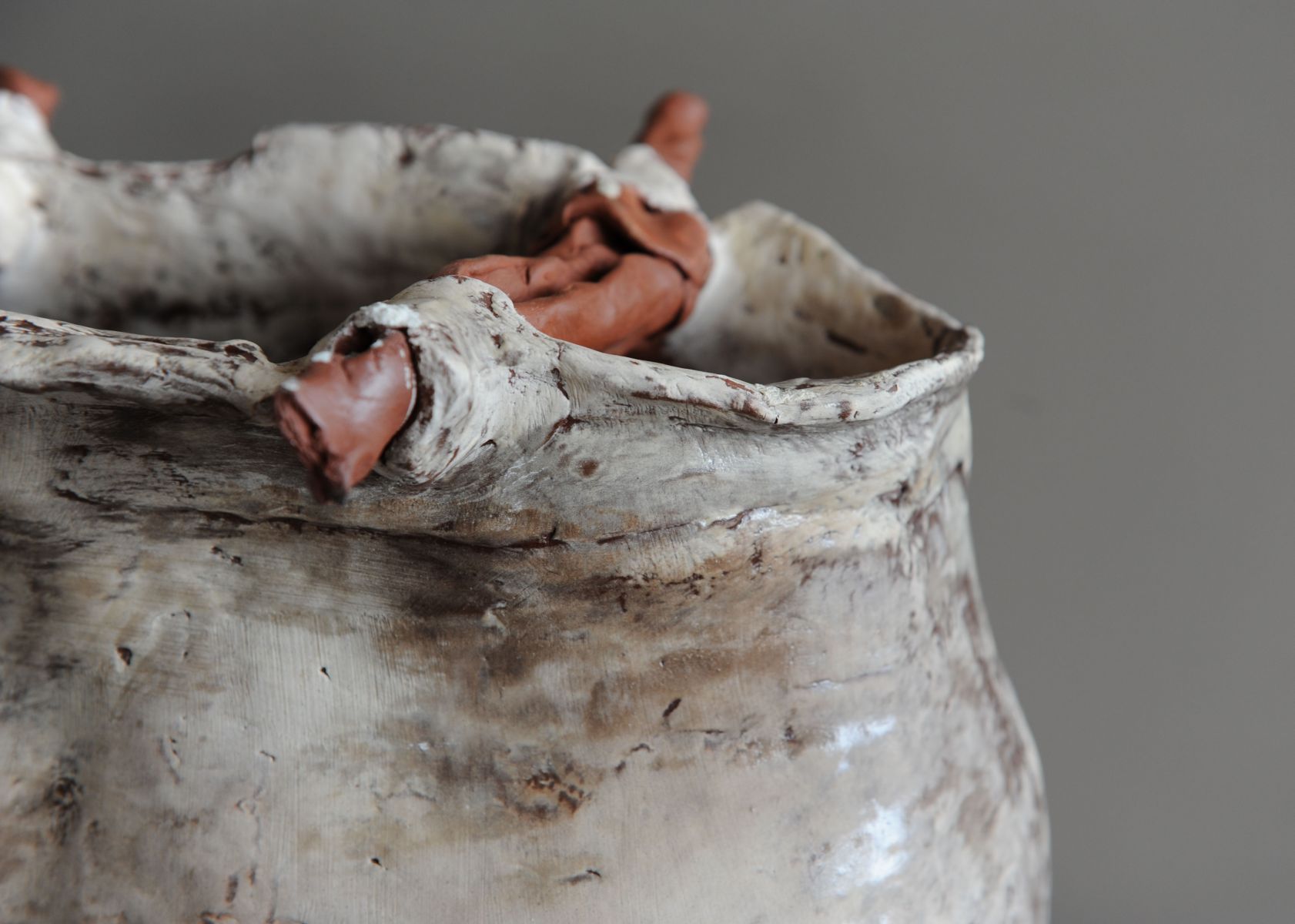
 +
+
There's no point in lying - I, like many people, each to their own extent, am drawn to creativity as a way of escaping reality. However, I notice that this escape did not and does not bring the peace one dreams about; on the contrary, it only increases the tension.
1
Each object is but a dream of reconciliation, an attempt to heal from the ambivalence and resistance of the everyday.
Working with the material and reflecting on it seems to me increasingly destined to become a personal practice of reinforcing mindfulness in life. The mechanism of this practice is quite simple: the pleasure that working with the material gives us generates attention to the process. Attention, in turn, gives rise to long pauses in thought - the consequence of which is a natural state of contemplative calm. Calm is a kind of rest for the mind, which, like any other tool, needs to rest in order to move on to a new stage of activity. To extend this practice to all areas of life is a beautiful and pleasant task.
In a sense, I am reasoning from the position that the artist, if he is attentive to his utmost capacity, is doomed to immerse himself in the experience of the process to the depths of feeling at which outwardly his work becomes a natural preaching, a testimony of inner change brought about through artistic practice. And this attention is born in a strange and spontaneous love for the material, a love which is totally vague and unaccountable, which permeates the very material density, the substance of the material; a love which for no reason aspires somewhere in absolute disorientation, to the moment of the fusion of idea and flesh of the still unrevealed, to the questioning of the cause, meaning and essence of the process.
Most of the work I've done in the last four years is vases. In particular, I have worked quite a lot on series of miniatures, allowing me to change the overall rhythm of the process somewhat, while remaining attentive and pulling some narrative thread through the entire series. An interesting feature of working on a series of miniature vases was for me the unification of the spirit of artisanal serial production and the idea of the freedom of future objects from the uniqueness of their function. I thought of my vases as independent decorative objects, some "points", details as if unintentionally attracting the viewer's attention, as if to counterbalance the large and powerful floor vases.
As a rule, in the process, I have deliberately limited myself in what I do. It helps to keep my attention for a long time. For example, by allowing myself to repeat only a certain number of strokes with the tool on the surface of the workpiece not yet cut from the head of the potter's wheel, or similarly, by using a very limited palette of two or three colours in the next stage of work, or sometimes by allowing myself only a certain body movement, from object to object, generating a similar movement of form, etc.
I still love the state of working with nuance and detail, like a restorer of ancient objects or an archaeologist dusting off a centuries-old object I have found. Because I cherish this state of mind, in the final stage of colour work I still use a brush less than two centimetres wide, even on large objects. The process of "painting" in this way inevitably turns into a careful detection of some strangely structured spots, not static, but whose movement has a direction indicated by the direction of the brush movements.
In view of this sense of 'discovery', the reference to Heidegger-Bibichine's "...way of revealing the hidden, whereby the real becomes constituted by - in presence" is very appropriate, which is very accurate for me, because it follows: "The essence of modern technology puts man on the path of such a disclosure of the hidden, thanks to which reality everywhere becomes available. Putting man on a path of disclosure, we call mission or destiny.
2
I should say that I learned the basics of working with ceramics from an excellent master, Vladimir Vasilievich Kholshchagin, who works mainly in the traditions of Russian pottery. Of course, this had a great influence on me, especially at the initial stage of my work. For a long time, for example, the fact of my "artisanal beginnings" sustained me in my desire to give a clear functionality to the objects I was making. I can safely say that working on the forms of traditional Russian pottery at the potter's wheel became my school.
It was then that my method of teaching pottery was born, based on attentive work with the body, formed "positions" of the hands, work with the breath. Simply all these principles helped me to master the craft component of the work, making it attentive. I use these same principles in my teaching, as far as it is appropriate in each case.
I was indeed inspired by the spirit of that ancient stage in the development of pottery, which represented the embodiment of a certain creative naturalness due to fairly good reasons, perhaps at least in its historical beginnings a sincere necessity.
The object that allowed me to make the transition in my subjective understanding of ceramics, material and process eventually became the vase. It was the vase that brought together in my mind the conceptual potential ranging from the ancient Greek vase, which was the subject of philosophical exercises, to the iconic Chinese funerary porcelain. In turn, these "cultural poles" symbolise for me the West and the East in myself, in the way I perceive things, in my attitude towards the material, towards the "way" in general.
In a way, being "doomed" to search for my cultural foundation by the geographical fact of birth - between Europe and Asia, consciously or, at times, unconsciously making this choice, I find this duality, like any other, quite exhilarating. The vase has thus become for me a symbol both of freedom of choice itself, in a sense, in a perspective - even almost religious freedom of will - and of the fear of uncertainty before that freedom. And ultimately, the vase, as an object, has acquired for me the symbolic meaning of a longing for a kind of unity, a dream of an inner experience of reconciliation with the very essence of the 'multiplicity' of the manifested forms of the world.
The functionality of my vases is often minimal, the diameter of the neck allowing only a single stem or branch to be placed in it. This approach in my work was conditioned by a desire to "dissect" the very practice of decorative-applied work with ceramics, to look into my personal attitude to the material, to go beyond "craftsmanship" as I perceive it. Here I am referring to the deliberate practicality of handicraft ceramics, where the material is subordinated to the function of the object. I was interested in redirecting the spectator's attention from the meaning of function to the meaning of the material itself. I wanted to intensify the role of meanings and feelings arising in the process of making, to express my relationship to the material and my subjective experience of its essence. I began to feel a kind of "respect" for the material, which in my mind was not just a means of implementing the master's will, but rather the equal cause of the appearance of the object.
3. Through-forms
First of all, it should be said that I did not invent the through-forms, and their emergence may have been provoked by elementary observation, but mostly by working with ink.
In fact, for me the conceptualisation of through-forms started with the theme of 'transparency' of human personality in two directions: from my personal sense of desire to comprehend the art of seeing in another person an essence independent of my notions about it, a certain beauty, an unconditional value, for only in the knowledge of the unconditional and primordial is true peace - that first, and second - from the 'weariness' of the obsession we have with each other in broadcasting our ideas about the world. As I see it, a sincere vision of some independent, substantive essence of the beauty of another person's personality would naturally remove this obsession as well, because in the primordial, the very possibility of comparison disappears. I use the word beauty because I like it, even though I am aware that in its habitual sense it is ambivalent and evaluative.
So, "transparency". Here I would like to remind you of the idea of "fleeing to art" quoted at the very beginning of this text. The reason for my reflections on the meanings of these subjects is obvious; I longed for an inner change capable of reconciling me with "ordinariness" and sought answers in the practice of working with the material.
First of all about the symbolism of the vessel as an object. It should be recalled that the first through objects I made were precisely vase-like, that is, had a neck, and the implication was that these objects should be complemented by a dry flower when exposed. Of course, I perceived the vessel as a human body, removing the volume, as if to remove that volume - utilitarianism, I was first of all talking about removing the fact of the practicality of communication (as if to see it as a kind of practice as well), a refusal to seek benefit in communication, hence the exploitation of the other person. There has been some dissection of the very reasons why I enter into different kinds of relationships with other people. It was together with this that an extremely important "corporeality" emerged, to which I will return a little later.
Of course, the symbol of the value, the beauty of the human being in man appeared as a dry flower, a certain axis of self-value hidden by "corporeality". The modest beauty of the wilted and dried flower is the beauty that demands attention and scrutiny, it appears as if in gratitude for our attempt to see it and be attentive. A living flower placed in such an object would, in this case, refer more to the obsessive blossoming of the external - in my opinion.
In the second case, however, what I was reflecting on when working with vase-like forms was the idea of "transparency", as a striving to refuse the role of a perceptual filter for other people. Let's say I'm a father and a teacher - the dilemma I'm faced with is obvious. Do I have the right to take this limiting position between someone (whether my child or pupil) and the World? Gradually, I recognised in the "cross-cutting" subjects the embodiment of a multitude of images and ideas, succeeding each other sometimes quite often, sometimes staying with me for months at a time. At some point I also became aware of an idea of personal and universal "transparency" in myself, as a kind of natural, conscious, extra-institutional oneness, the path to which lies through the "dissolution" of a certain "density" of the idea of self. However, this idea did not feel to have any beginning or foundation in my personal experience, it seemed to hang in the air, which began to worry me, and with it I began to lose any conceptual justification for the forms I was working on. Perhaps that was the point at which the awareness of the idea stood on an equal footing with the importance of the process itself. On the surface it was a very contradictory phase that brought me back, as time showed, to myself.
Influenced by ideas about "transparency" and, in part, by necessity - I made the series "Through. The Wisdom of Feminine Nature". And now, looking back a year ago, I realise that it was extremely important. In fact, these objects reflected the theme of "transparency" most fully precisely through a double reference to the theme of femininity. Firstly, the objects still had a neck and a stable base, conventional "legs", i.e. they were thought to be vase-like. Secondly, and this idea was key for the series as part of the project "Her", the series itself is built on the idea of a gradual opening-stretching of form, from the first to the ninth object, I thought in threes within the nine. All the objects, from the first, closed-walled, to the ninth, through and round, their very "opening" symbolises the opening of the female womb in childbirth. I remember how easy it was for me to refuse all work with colour. I did not try to decorate in any particular way, on the contrary, after my unsuccessful trial I gave up engobe altogether, leaving only the red clay. Of course, I worked carefully with the clay texture, but nothing more. I believe that the wood firing, would have been more appropriate here than ever, precisely as part of the conceptual approach. It was probably the first and only time I ever considered the necessity of working with "live" fire for me.
The series itself consisted of nine objects made of fired clay. I thought of it this way: the wall of the clay vessel refers us, in this representation, to the same ancient idea of the vessel as an object symbolising a woman's womb, the receptacle of the seed, nurturing life itself, giving birth to worlds... In the light of the feminine theme of the exhibition, the thought occurred to me of whether I could imagine the degree of self-denial and freedom from egoistic fear that the being who gives birth to this human world, society - person by person, letting go of its creation, not imposing its view on this world, giving to this world freedom ... The image of the mother, and even more, the image of a mother's love - the feeling of a mother's mute, unspoken, natural and very human plea to stay safe, within the 'known', within the vessel of her own fear - has emerged. And so, we already see heaven through the narrow neck of the vessel at the bottom of which we are, and from which we must "be born" again, realising the potential of passion to redefine our whole being, and ... the woman gives this freedom to the world, by becoming 'transparent' to the world
I thought, but rather felt the beauty and the scale of the feat of the woman - to become this vessel, to break through, to destroy her own fear, her own humanity, to inspire the whole world to move, to be the mother of this world, to release and inspire action. So in this fear there is a breach, a certain rupture, a silencing of the "human" in us, a discovery of another world, a world seen not through the eyes of fear, but contemplated in silent attention. A different vision of this world seems to demand a rupture in biological conditioning itself. That is, there was this happy fusion of themes and images that I had already begun to work on before.
4. Cylinders
After working on this series and the two exhibitions in which the objects were involved, I lost the thread of the development of form within the idea of "transparency" based on the removal of corporeality. That is, I was clearly aware that the idea itself was extremely important to me, but the form completely stopped working. Gradually, through parallel work on a series of objects that developed ideas about expanding the boundaries of the approach to "traditional" Russian ceramics through borrowing forms, and the traces of "destruction" inherent in other materials - I came to a complete indifference to working with utilitarian objects, even to all references and hints at the similarity of these objects to vessels. A kind of denial of utilitarianism emerged, akin to an experience of conflict. That is to say, for a moment I found myself even without an image of "body", although it seemed to me to be the central idea of the whole concept of the form of these objects. However, I was aware that the next step had already been taken, all that remained was to look closely.
The embodiment of the idea of "transparency", in ceramics, had no basis in myself. It was even present in the feeling I was starting to have when I worked on the objects. All the more so, the image of undividedness on the basis of "transparency" looked like an attempt to jump over a phase in the conception of the idea that the material was leading me to.
I was forced to take a step back, as if submitting to the wisdom of the material, which returned me from the dreams to the present. The vessel appeared as a symbol of something that denies this "transparency" in relation to the World, in relation to which "transparency" is unattainable. The vessel itself, the density of its material ceased to be for me a symbol of the density of the body. It appeared as a symbol of the very reason that this density is perceived as a human essence - what man is in the sum up of his own ideas about himself (physiological, mental and social). The vessel represents the walls of some basic conditions from which I too easily "got rid" in through vase-like objects. In my perception - it became a symbol of Fear as the quintessence of body consciousness given to us from nature as Fear that populates our world with its threat, spreading out and solidifying a dense wall around each of us.
Fear of death is the biological instinct for survival, which is the cause and the beginning of this society and creates an inner tension that at times rises to hatred in every single person. Moreover, the immense power of the all-encompassing power of fear lies in the fact that the mutual threat becomes the condition under which only a 'peaceful' human society is possible, subject to obeying the peaceful power. Equality in the face of a single and great fear - the fear of death, the threat to the 'corporeal' world of each individual human being, and moreover the threat to the idea of the continuation of oneself in posterity, as the desire to multiply oneself in others - do all these teach us to live together?
The notion that the earthenware vessel symbolises the body, the feminine beginning is archetypical. But I want to say more: it is the 'femininity' of the hollow form (femininity nurturing, generating and preserving this world), referring to the visible beginning of the physiological, corporeal side of considering the phenomenon of human life, that has caused me to see in the clay vessel the symbol of the very concept of 'humanity', the desire to look into my personal ideas of inheriting this very 'humanity', of inheriting a corporeality whose basis and consequence is fear. Accordingly, the forms embodying the internal phenomenon, in this case fear, had to be stripped of their corporeal references for obvious reasons.
The idea of working on cylinders did not leave me for about two years and it came from the technology of the potter's wheel. You have to understand that the cylindrical shape is the basic shape in this process, starting with it, we move from the workpiece to the goal of shaping.
I showed my first cylinders at an exhibition called "Silence of the Way. An Encounter", which we made together with my teacher, the painter Alexander Pesterev, in 2018. After the exhibition, these cylinders sort of gained a different weight in my own eyes, I started to go back to thinking about them. However, at the time, the ideas had some religious connotations. And I even remember a moment, a particular conversation about the Old Testament, the Book of Nehemiah, in which I suddenly realised the weight and scope of the idea that perhaps the through-cylinder encapsulates. Given the materials with which I work - red clay as a reference to the brickwork of the walls, and white engobe as if to symbolise the lime with which the walls of Orthodox churches are covered - the image of the walls of the Inner Temple of Man received very strong justifications, for example.
The present series of cylindrical forms on which I have been working since 2020, closed and open in different positions, are a simultaneous reference to the image of the walls of fear and to the idea of the transparency of that fear.
Thus - this very shaping of objects, which influenced the development of ideas, became a movement inside the field of an idea, subordinate to the shaping as much as it came from it. The whole conceptual line involving technology, from the choice of materials to the shaping and execution techniques, became logical to me. The deconstruction of ceramic forms, which outwardly looked like a return to a cylindrical basis, as well as a very important process of looking into the very phenomenon of forming a certain personal relationship to the material, all became for me a process of considering the worldview that constitutes my actual relationship to the world.

